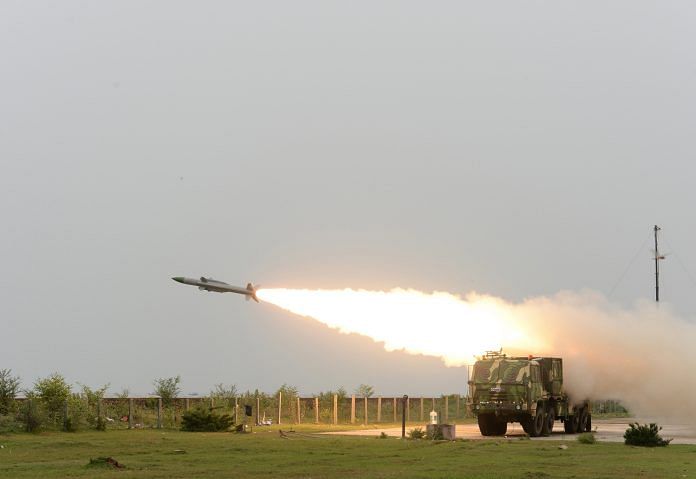The missile, which was to be deployed on the China border after large scale adversary build-up, has not been inducted yet.
Coming down heavily on the domestically developed air defence system that has been ordered by the air force and army to counter China, the central auditor has pointed to a 30 per cent failure rate during testing. The deficiencies have posed an “operational risk” for the nation during hostilities, it said.
A detailed report by the Comptroller and Auditor General (CAG) on the Akash air defence system says that it was to be installed at six designated sites in the “S Sector” between 2013-15, however, none of the projects have been executed yet.
While the report does not identify the “S Sector”, it is known that the Akash missile system was to be deployed at different sites in the North East, as well as in Ladakh to counter the growing Chinese military presence.
“Contract for procurement of the strategic missile system was signed in December 2010, the strategic missile system were not yet inducted at any of the six locations as of March 2017,” the report on the Rs 3,619 crore Akash missile contract says.
Pointing to serious quality deficiencies in some missiles that were delivered to air force stations, the report says that out of the 20 missiles that were test fired in 2014, 30 per cent failed.
“The preliminary failure analysis report revealed that the missiles fell short of the target, had lower than the required velocity, and also there was malfunctioning of critical units like Servo Control Unit and Connector,” the report says.
Two of the missiles did not even take off from the launchers, the audit report adds.
“Two missiles had failed to take off because the booster nozzle had failed. These deficiencies posed an operational risk during hostilities,” it reads.
Giving an insight into the circumstances in which the missile system was ordered, the CAG report says that six systems were to be inducted due to enhanced threat perception on the China border.
“Indian posture in “S” sector was changed (2009) from “Dissuasive” to “Deterrence”, due to the build-up of large scale military infrastructure by the adversary. Therefore, CCS approved (November, 2010) the procurement and induction of six squadrons of Strategic missile systems from BEL to be located at six IAF stations,” the report says.
The Akash missile system has been described by its developers as a success story, with export versions on offer to potential clients. A recent army procurement of new generation short range missile systems, for which international vendors from Israel, Russia and Sweden were competing, was done away with after a strong pitch for the Akash missile from its developers.






